Around 1,000 species have been newly documented from our region since the Flora of the Pacific Northwest was published in 1973. These include range extensions of native taxa, newly introduced exotics, and species new to science. Additionally, new information has become available for taxa that were included within the 1973 Flora. Systematic studies, informed largely by molecular methods, have also resulted in new circumscriptions of families, genera, and species. Illustrative examples of these additions and changes to the flora are provided below.
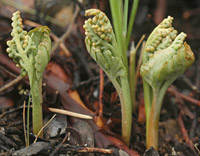
Botrychium hesperium is one of 18 Botrychium species described as new to science in North America since 1973. Eleven of these occur in our region and are not included in the 1973 Flora. An additional three taxa in our region await publication. Usable keys are hard to find for this difficult group of cryptic species. (photo: Ben Legler)
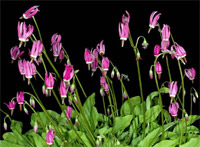
Dodecatheon austrofrigidum occurs in the coastal ranges of southwest Washington and northwest Oregon, where endemic. It was published as a new species in 2006. (photo: Gerry Carr)
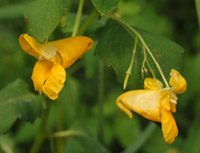
Impatiens ×pacifica is a hybrid between native I. ecornuta (= I. ecalcarata) and introduced I. capensis, first discovered in 1967 but not formally named until 2006. There is no mention of the hybrid in the 1973 Flora. Over 50 populations have been documented from western Washington and northwest Oregon. (photo: Ben Legler)
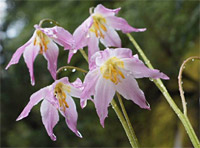
Erythronium quinaultense arose through hybridization between E. montanum and E. revolutum. Published as a new species in 2001, it is known only from a few populations on the southwestern edge of the Olympic Mountains in Washington. (photo: Richard Ramsden)
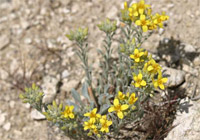
Physaria douglasii ssp. tuplashensis was discovered in the 1990s during inventories of the Hanford Reservation and adjacent areas in Eastern Washington. It is a local endemic restricted to a band of calliche soils. The genus Lesquerella, under which this taxon was first published, has since been merged into Physaria. (photo: Rod Gilbert)
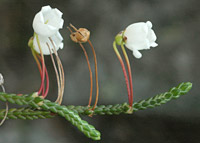
Cassiope lycopodioides occurs primarily in coastal Alaska and British Columbia. it has since been found on Vancouver Island and in the Cascade mountains in Washington. The Washington populations occur on steep rock faces and cliffs, and may represent isolated relictual populations persisting from past glacial periods. (photo: Ben Legler)
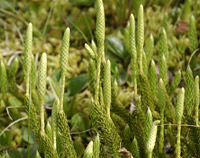
Lycopodium lagopus is a widespread boreal species easily confused with L. clavatum. It extends south in widely scattered locations to southern British Columbia, northwestern Montana, and the North Cascades of Washington. In the 1973 Flora it would key to the similar L. clavatum. (photo: Ben Legler)
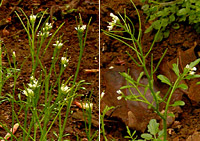
Cardamine hirsuta (left) and Cardamine flexuosa (right) have become widespread weeds in western Washington and Oregon. Both would key to, and be easily confused with, native species in the 1973 flora. (photos: Ben Legler)
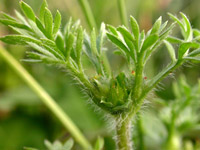
Soliva sessilis, forming low carpets in lawns, is so inconspicuous as to almost escape notice. Yet its sharply spiny fruits and tendency to grow in parks and on swimming beaches where people go barefooted have landed it a place on noxious weed lists. New populations of this introduced weed continue to be found in western British Columbia, Washington, and Oregon. (photo: Ben Legler)
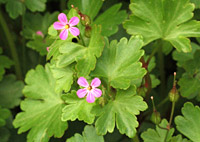
Geranium lucidum is described in the 1973 Flora as "recently recorded from Yamhill Co, Ore." It has now been found in multiple locations in western Oregon and Washington. It appears to be quickly spreading and well on its way to becoming a troublesome weed. (photo: Ben Legler)
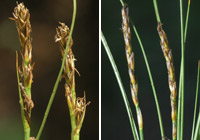
Kobresia simpliciuscula (left) is a circumboreal species that extends south through the Rocky Mountains to New Mexico. The 1973 Flora indicates it is not recorded from Montana. It has since been found in scattered locations throughout western Montana. Kobresia myosuroides (right) has a similar distribution and is not listed as occurring in Washington in the 1973 Flora. Specimens collected in the late 1970s now document it from the North Cascades of Washington and southern British Columbia. (photos: Ben Legler)
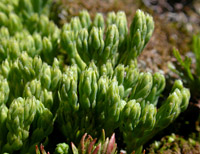
Lycopodium alpinum has a circumboreal distribution, extending south into southern British Columbia and northwestern Montana. In recent decades it has also been documented from multiple locations in the Cascades of Washington. Hybrids between L. alpinum and L. sitchense are frequently encountered wherever these two species co-occur, and the hybrid is known as far south as Oregon. (photo: Ben Legler)
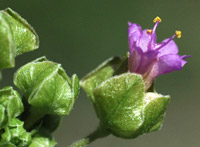
Mirabilis nyctaginea is a native species of the Great Plains region, reaching the eastern margin of the Flora area in Montana. The 1973 Flora states it is also introduced in Bonner County, Idaho. Additional introduced populations have since been documented from multiple locations in Idaho, Washington, and southern British Columbia, mostly on roadsides or near orchards. (photo: Ben Legler)
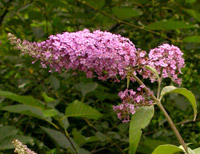
Scrophulariaceae is a well known example of a formerly large family now fragmented into several smaller families. Thirty genera are treated under Scrophulariaceae in the 1973 Flora. Only three of those genera remain in Scrophulariaceae under current classifications; the remaining 26 genera have been transferred to Orobanchaceae, Plantaginaceae, and Phrymaceae. By contrast, Buddleja (pictured), formerly placed in Buddlejaceae, is now considered part of Scrophulariaceae. Other large families fragmented by recent molecular work include Caprifoliaceae, Liliaceae, Polypodiaceae, and Portulacaceae. (photo: Ben Legler)
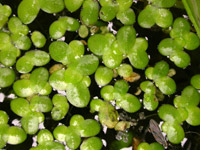
Lemnaceae, including duckweeds and watermeal, are among the world's smallest vascular plants. However, molecular work has shown this family to be embedded within Araceae, a family that also includes some of the world's largest flowers (actually, inflorescences). In the new Flora, you'll find our former Lemnaceae treated under Araceae. Other families that have been or may be subsumed include Aceraceae (now in Sapindaceae), Asclepiadaceae (in Apocynaceae), Chenopodiaceae (in Amaranthaceae), Fumariaceae (in Papaveraceae), and possibly Hydrophyllaceae (in Boraginaceae). (photo: Ben Legler)
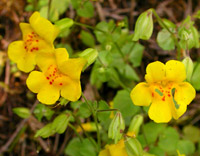
Mimulus species, with their bright yellow or pink flowers, are a conspicuous and readily recognized part of our flora. Yet, recent molecular work has shown the genus to be paraphyletic, resulting in its fragmentation into several segregate genera. All of our native Mimulus species are now treated under Erythranthe and Diplacus. Only the introduced Mimulus ringens remains in Mimulus in our area. Molecular work also supports recircumscription of Erythranthe guttata into multiple distinct species, such as Erythranthe microphylla (pictured). (photo: Ben Legler)
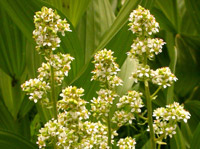
Saxifraga, as treated in the 1973 Flora, is not monophyletic. One species, Saxifraga nuttallii, has been transferred to its own genus, Cascadia. Other species with the leaves strictly basal are placed into Micranthes. These new genera are readily recognizable with practice, yet it is difficult to describe the differences within an identification key. (photo: Ben Legler)
